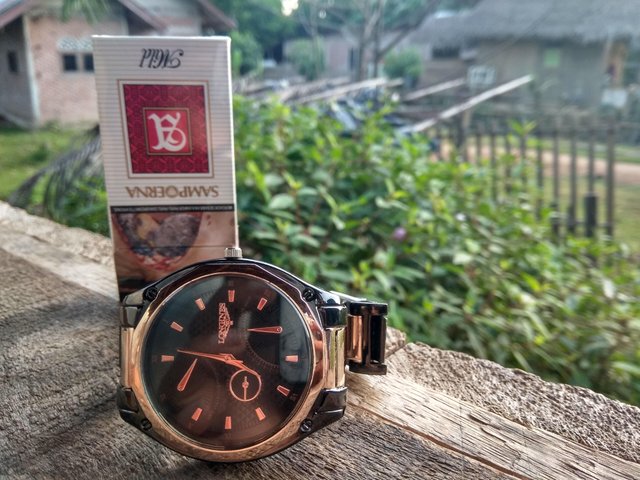A watch is a development of an existing pocket watch first. The concept of the watch itself has existed since the 16th century in the form of "clock arm" of Robert Dudley to Queen Elizabeth I of England. However, most assume that the creators of the first watch were Abraham-Louis Breguet for Caroline Murat, Napoleon's sister and queen of Naples. At first the watch was worn by the women just like a bracelet, but then began to appear watches for men to replace the pocket watch considering the practicality for such activities on soldiers and pilots.
 Watches that were previously pocket watches with bracelets or leather strap slowly also changed. Since World War I, with the need for a wristwatch to coordinate tactics and strategies, as well as many men in the army, the popularity of watches among men is rising. Beginning in 1923, John Harwood invented the first automatic winding watch, which made it easier for users to avoid manual winding on the clock manually.
Watches that were previously pocket watches with bracelets or leather strap slowly also changed. Since World War I, with the need for a wristwatch to coordinate tactics and strategies, as well as many men in the army, the popularity of watches among men is rising. Beginning in 1923, John Harwood invented the first automatic winding watch, which made it easier for users to avoid manual winding on the clock manually.

n 1957, the first electric clock was first produced and introduced in the world by Hamilton Watch Company, a watchmaker from Lancaster, Pennsylvania, USA (now under Swatch Group). But then the accuracy of the clock is still dependent on the balance wheel / coil balancer that the mechanism is still traditional like a general mechanical clock, so the accuracy is not much different from the hours that circulated at that time. However, this electric clock is greeted by the public at large because it no longer has to rotate the clock (in the ancient clock, to operate it required a rotary key to rotate the clock to keep it operating). The clock will stop operating when the electrically conductive surface (coil) is corroded. This became homework for Hamilton until the clock mechanism was updated in 1961

In this era began to appear also digital watches beginning with the presence of Hamilton Pulsar. The Swiss watch industry seemed reluctant to follow the quartz trend, which was further undermined by the quartz watch industry and led to an era called quartz revolution / quartz crisis. In the end the Swiss watch industry again rose from the late 80s to the late '90s with the advent of Swatch as well as the rising popularity of the mechanical clock. Currently, although quartz watches still dominate the population of watches in circulation, mechanical watches wiggle still felt especially in exclusive segments,
 so this hour finally drawn from the market after produced about 100 fruit. then along with the increase in the production of watches quartz, coupled with a variety of excess of quartz than an hour of mechanical ordinary,
so this hour finally drawn from the market after produced about 100 fruit. then along with the increase in the production of watches quartz, coupled with a variety of excess of quartz than an hour of mechanical ordinary,
#follow me
nice article... thanks for sharing ;)
Downvoting a post can decrease pending rewards and make it less visible. Common reasons:
Submit
Good job!!
Downvoting a post can decrease pending rewards and make it less visible. Common reasons:
Submit